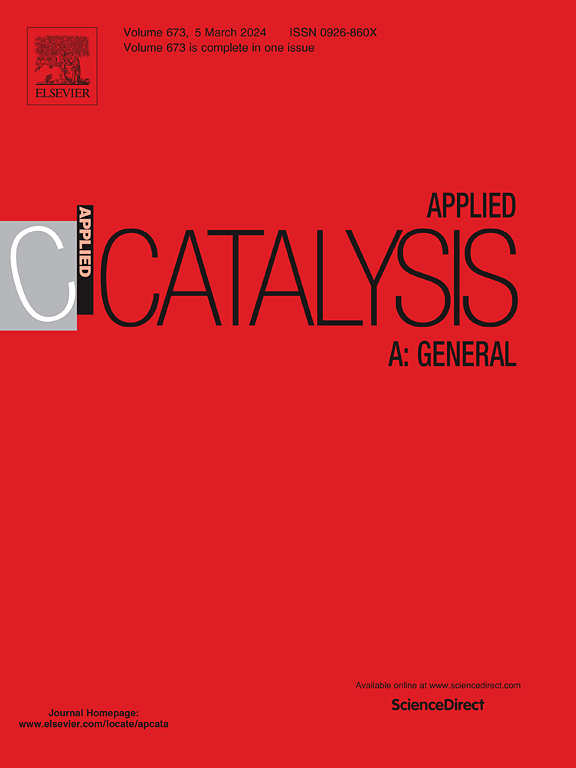Turning CO2 into an alternative energy source: Study on methanation reaction optimization
IF 4.7
2区 化学
Q2 CHEMISTRY, PHYSICAL
引用次数: 0
Abstract
Carbon dioxide (CO2) methanation is an effective technology for mitigating CO2 emissions, major contributor to global warming, by converting CO2 into methane (CH4). This work describes use of CO2 (feedstock) using molecular hydrogen to produce CH4 using mono-metallic Ni/γ-Al2O3 catalyst in continuous flow fixed bed downflow reactor. The catalyst was characterized by XRD, SEM, BET, H2-TPD, H2-TPR, TPO, and Raman techniques. The influence of temperature, gas hourly space velocity (GHSV), pressure, H2/feed, nickel content and calcination temperature were studied. Optimal conditions using Taguchi method yielded maximum CH4 selectivity (100 %) at T = 350 ºC, GHSV = 5000 mL gcat−1 h−1, P = 15 bar, and H2/feed = 5. Under industrial reduced conditions (300 °C, 4000 mL gcat−1 h−1, 1 bar, and 4.5), CO2 conversion improved from 73.67 % to 92.84 % using optimum 15 wt% Ni catalyst and 600 °C calcination temperature. The catalyst maintained ∼90 % CO2 conversion over 100 h without deactivation.
将二氧化碳转化为替代能源:甲烷化反应优化研究
二氧化碳(CO2)甲烷化是一种有效的技术,通过将二氧化碳转化为甲烷(CH4)来减缓全球变暖的主要原因二氧化碳的排放。本研究描述了在连续流固定床下流式反应器中,利用Ni/γ-Al2O3单金属催化剂,利用CO2(原料)利用分子氢生产CH4。采用XRD、SEM、BET、H2-TPD、H2-TPR、TPO和拉曼等技术对催化剂进行了表征。研究了温度、气体时空速(GHSV)、压力、H2/料、镍含量和煅烧温度等因素对焙烧效果的影响。最优条件使用田口方法产生最大甲烷选择性(100 %)T = 350ºC, GHSV = 5000 毫升gcat−1 h−1,P = 15 酒吧,H2 /饲料= 5。在工业还原条件下(300°C, 4000 mL gcat−1 h−1,1 bar和4.5),使用最佳的15 wt% Ni催化剂和600°C煅烧温度,CO2转化率从73.67 %提高到92.84 %。催化剂在100 h内保持了~ 90 %的CO2转化率而没有失活。
本文章由计算机程序翻译,如有差异,请以英文原文为准。
求助全文
约1分钟内获得全文
求助全文
来源期刊

Applied Catalysis A: General
化学-环境科学
CiteScore
9.00
自引率
5.50%
发文量
415
审稿时长
24 days
期刊介绍:
Applied Catalysis A: General publishes original papers on all aspects of catalysis of basic and practical interest to chemical scientists in both industrial and academic fields, with an emphasis onnew understanding of catalysts and catalytic reactions, new catalytic materials, new techniques, and new processes, especially those that have potential practical implications.
Papers that report results of a thorough study or optimization of systems or processes that are well understood, widely studied, or minor variations of known ones are discouraged. Authors should include statements in a separate section "Justification for Publication" of how the manuscript fits the scope of the journal in the cover letter to the editors. Submissions without such justification will be rejected without review.
 求助内容:
求助内容: 应助结果提醒方式:
应助结果提醒方式:


